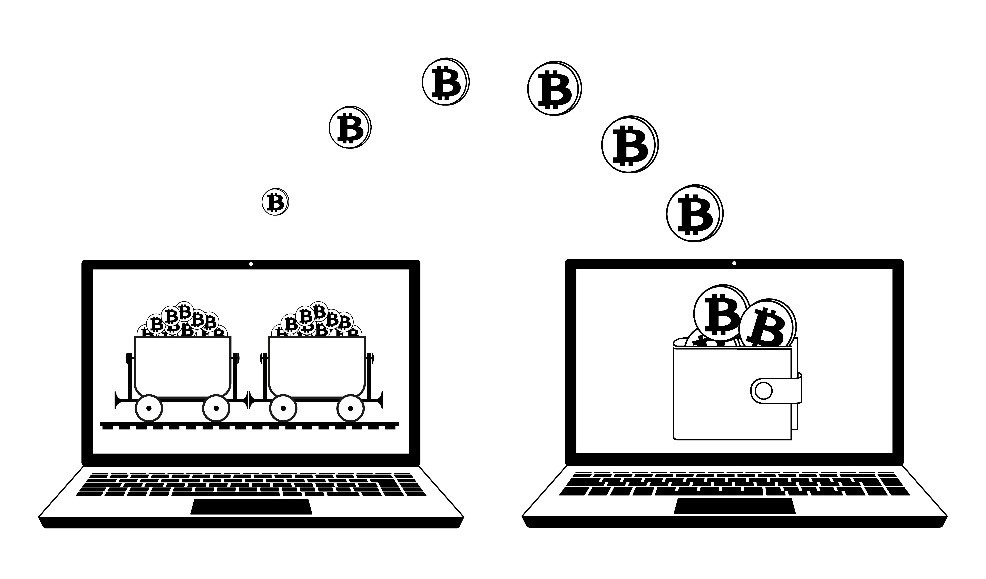Comments To The Sebi’s Discussion Paper On Framework For Regulatory Sandbox
The Securities and Exchange Board of India (“SEBI”) released its discussion paper on the framework for a regulatory sandbox (“RS”) (“Discussion Paper”) on 28 May 2019. The SEBI’s perceptiveness to the significance of an RS as a regulatory tool is commendable. Its decision to undertake public consultation will not only set a healthy precedent for regulators across India but will also ensure the effectiveness of the final framework for a RS.
This submission is informed by our work on emerging technologies and their corresponding regulatory frameworks. We believe that an RS adds immense value to regulation formulation and enforcement by providing crucial datasets to the regulator, including those on successes and failures of, and challenges faced by the RS, its participants and users. In that light, we believe that a nimble, reasonable and robust regulatory sandbox will contribute immensely to developing India’s financial technology (“fintech”) landscape by facilitating informed decision making.
This submission is divided into two parts: (a) general themes, which inform a majority of the Discussion Paper and (b) specific recommendations to key issues.
1. General themes
1.1 The SEBI’s oversight should be moderated: In the Discussion Paper, the SEBI has inserted clauses which allows it to exercise periodic oversight over the participants. While supervision is necessary and contributes to the SEBI’s aim to collect more information from the participants, the SEBI may also consider shifting to a light touch regulatory approach where regulatory intervention is the exception, not the norm. The SEBI should focus on ‘shared learning’, which is the primary motive of the RS. The SEBI gives itself certain supervisory powers in this Discussion Paper[1] which may prove burdensome, restrictive and time-consuming. We recommend that the SEBI suitably modify its supervisory powers and allow participants to work in the sandbox with greater independence and flexibility.
1.2 No concrete and exhaustive criteria for eligibility:
The eligibility section of the Discussion Paper should be fleshed out further. Terms such as ‘truly innovative’, ‘significantly different’, ‘genuine need’, ‘limited prior testing’, amongst others, leave immense scope for confusion and discretion. We suggest that these should be replaced with terms which increase clarity and determinacy and reduce the scope for such confusion.
1.3 Requirement to predetermine post-testing strategies:
The Discussion Paper requires participants to devise exit strategies and post-testing deployment strategies (paras 19 and 21) even before entering the RS. Such determinations are premature, given that at the time of applying to the RS, the prospective participants may not even be sure of the commercial viability of their solution, or they may not know if their solution will successfully clear the testing period in the RS. In such circumstances, the prospective participants may not only offer inaccurate information but may also list strategies which the SEBI may be agreeable to, in order to secure its approval. This defeats the purpose of collecting such information. We recommend that such information should be sought from the participants midway through the testing period for more accurate and reliable information.
The above observations should be read in tandem with the specific recommendations on key issues detailed below.
2. Specific recommendations to key issues
| S. No | Paragraph number and content | Comments | Recommendations |
| 1. | Para 10: “By participating in the sandbox, while the companies would get an opportunity to test their solutions on real customers/ investors, on the other hand, it may help SEBI to frame policies that may reduce the time and cost of deploying new investor-centric solutions in the capital market.” | This clause of the Discussion Paper can add significant value to the RS if it ensures that the SEBI will suitably change its regulatory framework if participants successfully clear the testing stage. This will ensure that the regulatory relaxations which the participants have benefited from within the RS are replicated on the ground as well. If no such changes are effected, successful participants may still face roadblocks in the market, which were present before they entered the sandbox.
|
We recommend that the RS framework should incorporate a clause requiring the SEBI to update its regulatory framework if a threshold number of participants are able to successfully meet reasonably pre-defined key-performance indicator targets. |
| 2. | Para 12: “To begin with, it is proposed that all market participants registered with SEBI under section 12 of the SEBI Act 1992, shall be eligible for testing within the Regulatory sandbox. A market participant can come on its own or use the services of a fintech firm. The registered market participant shall be treated as the principle applicant, even if it uses the services of a fintech firm, and shall be solely responsible for testing of the solution in the sandbox.” | The Discussion Paper allows only participants who are registered under section 12 of the SEBI Act, 1992 to participate in the RS as the principle applicant. This means that if fintech players and startups wish to participate in the RS, they shall have to team up with a registered entity. This may pose two hurdles. Firstly, this approach goes against the objective of the SEBI to create innovative financial products, lower transaction costs and increase financial inclusion (Para 7), since it keeps fintech innovators out of the picture. Secondly, in order to avail the benefits and credibility that come with an RS, fintech players may be forced to accept lopsided contractual terms posed by registered entities, with whom they may wish to team up. In the long run, this may deter innovation in the country by keeping the rewards of innovation out of bounds for innovators. | We recommend that fintech startups should be allowed to participate in the RS, given their contribution to the fintech ecosystem. Additionally, special consideration should be given to their financial wherewithal while allowing such participation. Accordingly, the concept of principle applicant should also be done away. |
| 3. | Paras 16, 17 and 18: “16. SEBI is considering a separate (new) regulatory regime for sandbox testing wherein exemptions from various SEBI regulations may be provided after analyzing specific sandbox testing applications. This could enable a more flexible regulatory environment for eligible participants to comply.
17. Depending on the FinTech Solution to be tested, SEBI shall determine the specific regulatory requirements which may be considered for relaxation on case-by-case basis. A reference list is placed at Annexure-2 with examples of the regulatory requirements that will be mandatory and those which SEBI may consider relaxing during the sandbox testing.
18. Alternatively, market participants desirous of participating in the regulatory sandbox may make an application for exemption / relaxation from relevant provisions of SEBI regulations. Firms desirous of participating in the sandbox are required to apply for relaxation of specific regulations that they feel are hampering their innovations or are acting as barriers to entry of new products.” |
The SEBI has the discretion to choose which regulations shall be relaxed, for which participants and for what duration. As such, the SEBI’s powers under these clauses are wide, and leave a lot of room for subjective interpretation. | We recommend that the SEBI should release an exhaustive list of the regulations which it will and will not relax. This will offer some clarity and predictability to the participants and enhance transparency in decision making. This list should also offer clear rationale for SEBI’s decisions.
In addition, we recommend that the SEBI create a checklist laying down the parameters according to which relaxations may be given. Further, the SEBI, being better versed with its regulations should proactively offer guidance to participants to help them anticipate the regulations which may act as impediments. It should then work together with the participants to discuss suitable relaxations. |
| 4. | Para 19(a): “Genuineness of innovation: The solution should be truly innovative or significantly different from existing offering and which adds significant value to the existing offering in the Indian market.”
Clause 3.3, Annexure I: “Genuineness of innovation: Explain how applicant’s solution constitutes a significant different offering in the market place.” |
The terms “truly innovative”, “significantly different” and “adds significant value” are inherently subjective and should not be used as determinants of eligibility.
Certain fintech solutions may have been tested in other RSs, or on the ground and/or used in other jurisdictions, but may require further testing and guidance under Indian circumstances. Further, some solutions may incorporate innovations that do not fit under the exceptions provided in clause 21 (namely efficient alternative and process efficiency). It will be counterproductive to the objective of the RS if such innovations are not allowed to be tested in the RS on the ground that they are not genuine. |
In our opinion, the SEBI should lay out the list of considerations which it will use to determine whether a product is innovative or not. |
| 5. | Para 19(b): “Genuine need to test: The applicant should have a genuine need for testing the solution on real customers within the sandbox. The applicant should demonstrate that the solution cannot be developed without relaxing certain regulations within the sandbox.” | Whether a product will be able to thrive in the market without testing on customers within the RS is a subjective opinion. This stipulation may prove onerous for participants who may not be able to conclusively prove that their innovations cannot be developed without regulatory relaxations, or those who may not be able to communicate relevant issues clearly. | We recommend that this requirement be done away with completely.
|
| 6. | Para 19 (c): “Limited prior testing: Before applying for testing in the regulatory sandbox, limited offline testing of the solution should have been carried out by the applicant.” | Prior testing of a fintech product should not be grounds to exclude it if the solution shows merit. The prior testing may not have thrown up complete results, or some improvements in the solution may have been made since the last round of sandbox testing, among other scenarios. Moreover, if the same solution is being tested in another RS, this clause may disqualify it from participation in SEBI’s RS, which will be counterproductive
|
We recommend that this clause be deleted from the final RS framework. The SEBI should in fact readily consider the solutions’ learnings from any prior testing while deciding whether it should be included in its RS. |
| 7. | Para 19 (g): “Deployment post testing: The applicant should demonstrate the intention and ability to deploy the solution in India on a broader scale. To this effect the applicant should share a proposed sandbox exit and transition strategy.”
Para 21 (c): “The applicant has no intention of deploying the FinTech solution in India on a broader scale after exiting from the Sandbox.”
Clause 3.5, Annexure I: “Timelines for pan-India Deployment post Sandbox testing.”
Clause 6.2, Annexure I: “Please provide a pan-India deployment strategy, post successful Sandbox testing.”
Clause 6.4, Annexure I: “Please provide exit and transition strategy if the deployed solution turns unviable.” |
The participant should not be mandated to deploy the solution in India if it successfully completes the testing period. Several factors may affect the decision to deploy a solution in a given market. For instance, the innovators may be dissatisfied with the results in the RS and may want to improve their solution, or they may want to strategically wait for a more conducive policy framework to be implemented, among other things.
Many participants are drawn to the RS framework because they do not have a viable exit strategy in place yet. Making this a condition for eligibility may exclude many valuable innovations. |
The requirement to have an exit strategy may be amended to read that an exit strategy may be developed with the guidance of the SEBI during the testing period.
|
| 8. | Para 33: “In the event that an application is rejected at any stage, the applicant will be informed accordingly. The reasons for rejection could include failure to meet the objective of the sandbox or any of the eligibility criteria. The applicant may re-apply for the sandbox when it is ready to meet the objective and eligibility criteria of the sandbox, subject to a suitable cooling-off period.” | The Discussion Paper does not clarify when a solution will be deemed to have failed to meet the eligibility criteria of the sandbox. This creates considerably ambiguity and leaves this option open to misuse. The Discussion Paper also does not make it mandatory for the SEBI to provide a reason for rejecting the framework at any stage. | We recommend that the final RS framework should clearly list out considerations (over and above those mentioned in the Discussion Paper) which will be relevant to deciding which solutions will be selected to the RS and which will not. This list should also exhaustively list the “other miscellaneous factors considered relevant by the SEBI” as mentioned at Sr. No. 9, Table 2, Page 11 of the Discussion Paper.
We further recommend that any rejection of approval should be accompanied by a reasoned order for rejection. This will allow the participant to remove the impediments and apply again. |
| 9. | Para 35: “During the testing stage, if the applicant intends to make material changes to the solution, the applicant should apply to SEBI at least 1 month in advance and provide details of the proposed changes with reasons. SEBI’s approval will be required before the proposed changes can be implemented.” | Participants may learn new things about their solutions once the RS testing starts. This may require them to make quick changes to their solution to improve results. Taking the SEBI’s permission for every change to the solution will prove onerous for the participants. Moreover, what shall constitute a material change is not defined under the framework. This may lead to a situation where every small change may need to go through the rigours of this clause, which is undesirable. | We recommend that the SEBI should clarify what it means by a material change for the interpretation of this clause. This would exclude minor changes from its ambit.
Further, we recommend that the participant should only be required to intimate any proposed changes to its solution to the SEBI and should not be required to take its permission.
|
| 10. | Para 55 (i): “Upon completion of testing…SEBI shall decide whether to permit the product, process, service or solution to be introduced in the market on a wider scale. Where allowed, participants intending to carry out regulated businesses will be assessed based on applicable licensing, approval and registration criteria under various SEBI regulations, as the case may be.” | This stipulation is onerous. In any case any successful solution which is rolled out into the market will be subject to all prevailing laws. Moreover, market forces will organically determine the viability of these solutions in the market. Therefore, additional scrutiny may not serve a purpose.
|
We recommend that this clause be removed from the final RS framework. |
| 11. | Para 67: “Where any delay in revoking the approval would be detrimental to the interests of the applicant, their users, the financial system or the public in general, SEBI shall revoke the approval immediately and provide the opportunity for the participant to respond after the effective date of revocation. If the response is accepted by SEBI, SEBI may reinstate the approval to participate in the sandbox.” | Any such step by the SEBI is bound to have grave effects on the reputation and the viability of the solution which is being tested. Further, this may be a commensurate response only in a limit set of cases.
The clause does not consider the time which may be lost in the entire process of conducting hearings and passing a decision. This time will invariably be deducted from the testing period prescribed for the solution, which will harm the testing process itself. |
We recommend that the SEBI should come out with an exhaustive list of considerations which will inform the exercise of its power under this clause. Further, the SEBI should ensure that approvals are revoked only in a very limited set of cases. As and when any approval is revoked, the SEBI must be required to explain its decision by way of a reasoned order, as well.
We also recommend that if the solution is reinstated in the RS after the proposed post-facto hearing, then the time lost due to suspension should be immediately added to its testing period. |
| 12. | Para 69: “Monitoring and administering the regulatory sandbox will require considerable resources from SEBI. Should SEBI charge a minimal fee for every applicant participating in the sandbox? If yes, what should be the quantum of such a fee? If no, why? Please justify your view with supporting rationale.” | The SEBI may charge a standard minimum fee from all participants. A standard fee will ensure that no participants are completely excluded from the RS testing process on account of financial or cash flow issues. Simultaneously, the SEBI must also establish a mechanism to consider cases for rebate/staggered payment for promising solutions.
The figure arrived at by the SEBI should be supported by the method used to arrive at that figure. An unusually high figure should not be stipulated and preferably it should be capped at INR 50,000. The reason for this is that most expenses of the SEBI may be one-time and not recurring. Moreover, the government and the SEBI have an interest in ensuring that innovation in the country is promoted. Accordingly, they must also accordingly contribute financially to making this possible. |
|
| 13. | Para 70: “The frequency for submission of interim reports should be such that SEBI gets adequate information and time to monitor the testing process while at the same time not posing a hurdle or burden on the applicant’s testing process. What should be the frequency for submission of interim reports?” | We recommend that within the nine month testing-period, the number of times interim reports sought by the SEBI should be capped at three. This is because the obligation of preparing interim reports may eat into the time participants may otherwise use for improving their solutions.
Interim reports should have a predetermined format provided by the SEBI. This format should include all metrics considered important by the SEBI. This will save participants the time of formulating the structure of a comprehensive interim report. Moreover, this will ensure that the data of different participants is comparable across different metrics. The format may be made machine readable to make analytics and storage more convenient.
The SEBI and participants of the RS may fix in advance dates on which these interim reports will be due. These dates need not be spaced out equally. For instance, two out of three reports may be due within the first four months and the last report may be submitted in the sixth or the seventh month as the learning curve may be very steep initially, therefore meriting more reports in the first few months as opposed to towards the end of the testing period.
The SEBI should not choose a static period which applies to all solutions, instead it must tailor the frequency of interim reports to the specificities of the solution being tested. |
|
| 14. | Para 71: “For a rejected application, what should be the duration of the cooling-off period? Please suggest a suitable time period with detailed rationale. | The cooling off period should be kept to a minimum. We believe that a period of one month is sufficient for this purpose. The cooling period will apply only to rejected applications. These applicants may fall into two categories. First, those applicants who are disqualified because their solutions are not deemed innovative (or any other such fundamental issue). They will not be affected by the cooling period at all, since they will not be eligible in the future either. The second category is of those participants whose solutions may be rejected on technical grounds. They can rectify these shortcomings in a short period of time. Therefore, there is no rationale to prescribe a long ‘cooling period’ for them. As soon as the particular issues are fixed, the participants should be eligible to apply again. | |
| 15. | Para 72: “Any other comments/suggestions that SEBI should consider for encouraging innovation through sandbox testing.” | The RS framework should also discuss how it intends to coordinate with other regulators in case solutions have components which fall under the regulatory ambit of different regulators. For instance, a solution which connects digital wallets (regulated by the Reserve Bank of India) and the securities markets (regulated by the SEBI) does not fall clearly within the ambit of any one regulator. In such a situation, the SEBI should coordinate with the other relevant regulator(s) and the RS framework should include a provision to this effect. The SEBI should also ensure that such overlap does not affect the participants’ relaxations under either RS. Ideally, a coordinated approach should ensure that relaxations and concessions under both the RSs apply. The SEBI should strive to imbue the RS with greater independence and should commensurately reduce its regulatory oversight over the RS’ participants. A good guiding principle is ‘intervention by exception’ whereby the SEBI course corrects participants only where it is imperative to do so and not as a matter of practice. This would allow solutions within the RS to develop organically, which is in line with the larger goal of promoting innovation through the RS. |
|
[1] It gives itself the power to decide which solutions will be rolled into the market after the testing period (para 55(i)), to immediately revoke the approval of participants under opaque circumstances (para 67), to demand a one-month notice prior to making any material changes to the solution (para 35) and to demand interim reports from the participants (para 70).










